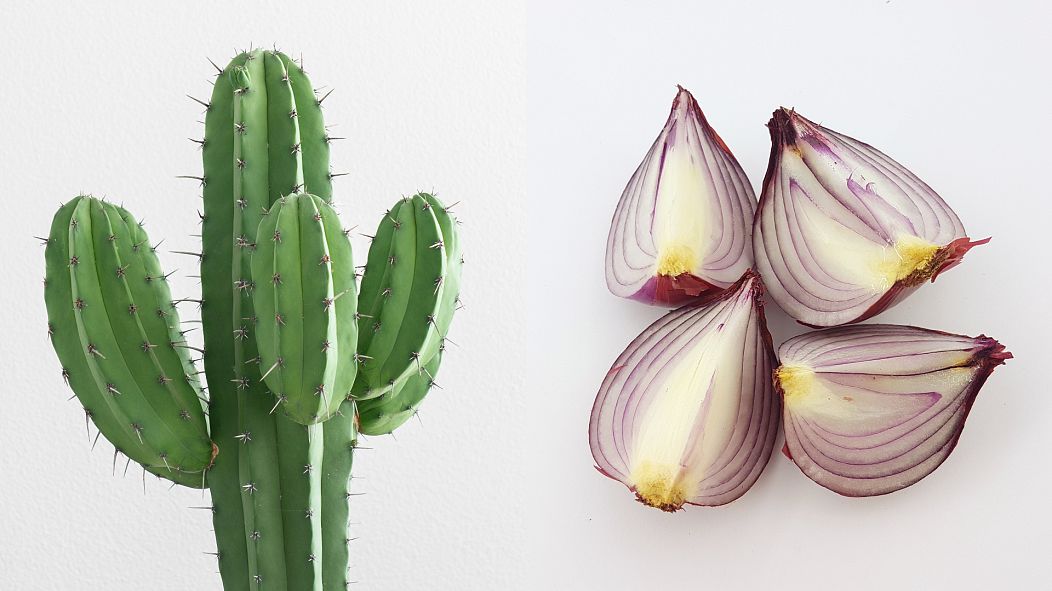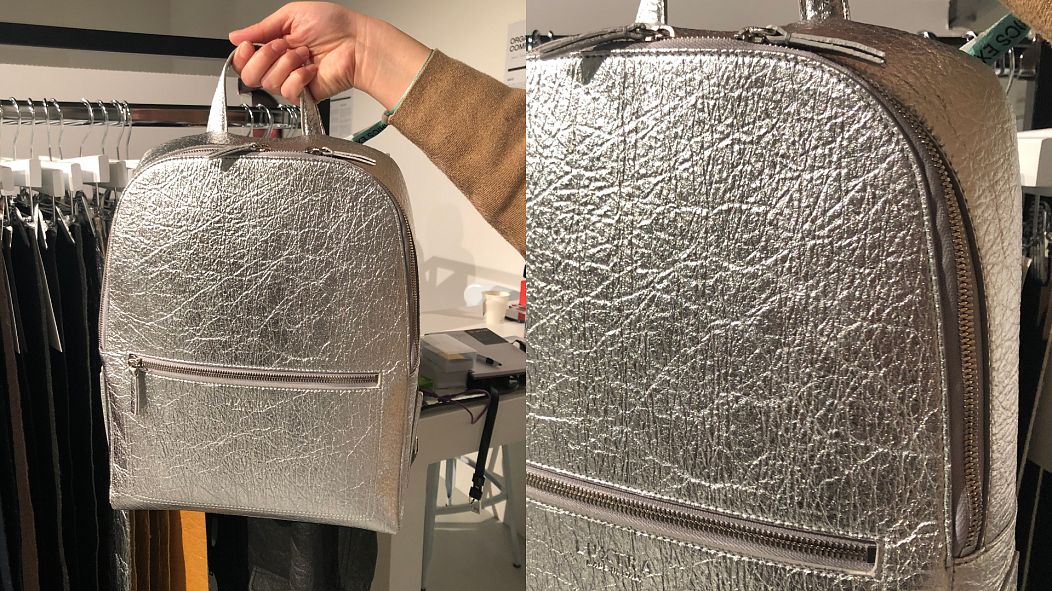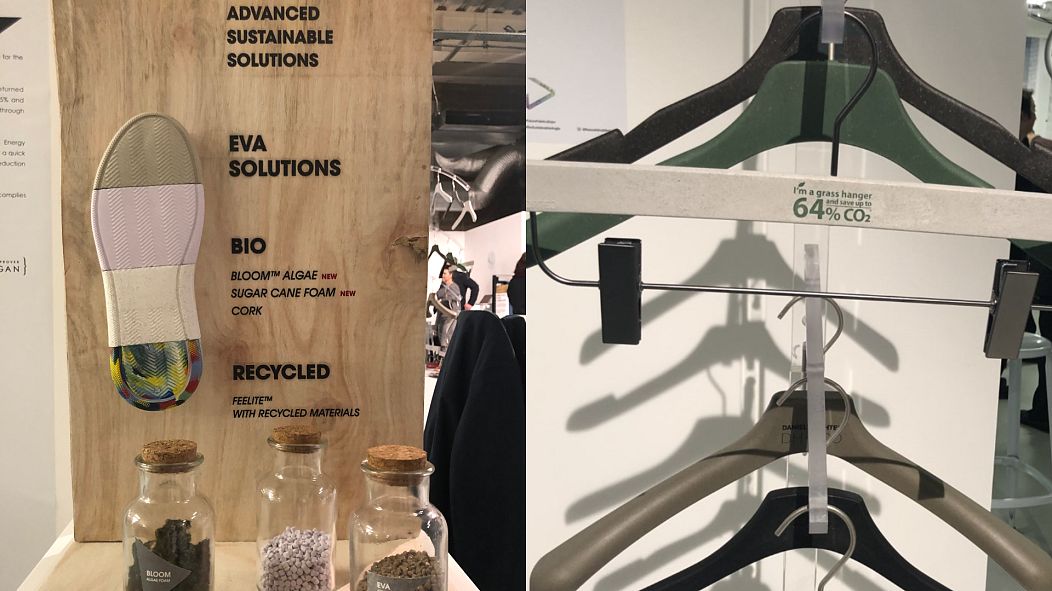With so many sustainable fabrics now available, why do plastic-based polyesters still manage to dominate the market?
The Future Fabrics Expo is “one of the biggest success stories in fashion," internationally recognised sustainable fashion advocate, Orsola de Castro, tells me as we traverse this year’s exhibition. Wading through rails and rails of new fabrics at London’s Victoria House, it is impossible not to be inspired by the sheer amount of innovation on display. The 22,000 square foot space is filled with a combination of designers, suppliers and innovators, connecting to discuss the future of this multi-million-pound industry.
The 2020 edition is the largest showcase yet. It consists of over 5,000 globally sourced and responsibly produced materials, featuring wacky designs that are truly ahead of the curve.
Sweat crystals, fruit and veg leathers and biodegradeable sequins are just some of the novelties this year is showcasing. Organised by founder and Director Nina Marenzi, the event comes under the Sustainable Angle umbrella, a not-for-profit organisation supporting sustainability in fashion and textiles.
Bumping into Marenzi herself half-way round the exhibition, she talks of the “meaningful, future proof and climate positive” nature of the 2020 event, mentioning her passion for the regenerative agricultural practices on show this year. “This is where fashion can play its biggest role yet!” she says with enthusiasm.
Cactus leather and onion skins
In a bid to showcase alternatives to non-renewable, oil-based polyesters and cotton, many fabrics this year had a fruit and veg theme to them. The vegan leathers on show ranged from pineapple to banana, and even onion skin byproducts.
One newbie on the scene was brand Desserto who are making bio-based Cactus leather. It’s fully vegan and cultivated in Zacatecas, Mexico, on an organic plantation fed on rainwater. The raw cactus material comes from the prickly pear cactus, which is selected and cut, using only the mature leaves so that the plant itself is undamaged. What’s more, the cactus leather is so strong and durable that it’s not just being used in fashion, but also for furniture and in automotive production.
Ever heard of onion skin being used as a fabric? Cebolla Veneer is the brainchild of Renuka Ramanujam, a graduate from Central Saint Martins in London. She collected red and white onion skins from supermarket crates and household cooking to make a disposable, biodegradable material. Boiling the skins, Renuka bonded them with a bio-based adhesive before compressing them to form delicate sheets. The waste water was then separated and used to dye the textiles.
Continuing with the fruit and veg theme, New Generation Piñatex was also on show at the event, having evolved from the existing Piñatex Original. What’s it made of? Pineapples of course. The fabric is composed of the waste of a pineapple harvest, utilising the long leaves surrounding the fruit which are usually discarded. This production method is part of the principles of the circular economy, which minimises waste and makes for a versatile material used in fashion, accessories and even interiors. Piñatex supplier Ananas Anam is leading the way on the pineapple front – our favourite product was this metallic, silver backpack by brand Luxtra.
Sustainable sequins and silky partywear
Despite our extensive list of 60 sustainable brands to have on your radar, it’s still a struggle to find green party wear for a night out. Traditional sustainable fabrics, like hemp or bast, tend to be heavier, but innovators are now adapting to make delicate, shiny fabrics for a more glamorous look. Future Fabrics led us to discover fine, multicoloured TENCEL™ for example, which could function as the base for a sheer dress or a chiffon-style blouse. TENCEL™ Lyocell fibers are known for being gentle on the skin, hailing from the sustainably sourced raw material wood.
In another corner of the room, we unearthed a rail of luxurious organic cotton knits. A gold, sparkly sample shone out from the rest, seemingly perfect for a glitzy dress on cold winter nights. It made us think, why would we ever wear anything else? When so many sustainable options fill the room, it makes you wonder why plastic-based, polyesters still manage to dominate the market.
Then there was Chul Organic Thai Silk, the first silk company to be certified by the Global Organic Textile Standard (GOTS) certification. This means all the steps involved in the manufacturing process of the silk were both environmentally friendly and socially responsible. Brushing our fingers through the samples, the silk was smooth, light and floaty to the touch.
Just one table along was Modespitze’s organic lace and The Sustainable Sequin company, both representing the details and trimmings seen mostly in occasion-wear. The embroidered net, tulle and mesh lace (also GOTS certified) is used for wedding dresses and was displayed in ornamental, geometric and floral patterns. As for the sequins, founder Rachel tells me these are used both in jewellery and as decorative finishes to textiles.
Usually, sequins are derived from petroleum and their shimmer is obtained through chemical or metallic coatings. So, the fact that these sustainable sequins are made from a bioplastic film, means they can safely biodegrade, deriving from renewable crops. This is far more preferable than PVC based sequins which persist in the environment for thousands of years.
Sweat crystals and hangers made out of grass
At this year’s event, it was the details that really stood out. No stone was left unturned - even the clothes hangers themselves were green!
Cortec is a brand that has been developing coat hangers for professional presentation since 1961. The company’s latest development is hangers made from field grass. The material is called ‘Agriplast’ and derives from regional grass fibers and recycled/biodegradable plastics paired together. Impressively, the coat hangers have proven CO2 savings of up to 64% compared with plastic hangers. Equally, the regional aspect means grass is used from local areas in Germany, reducing transport emissions in the process.
Future Fabrics had dedicated a whole area to sustainable solutions to shoe soles, from using algae and cork to even sugar cane foam as a base material. These ideas are novel in an industry where the majority of shoes are made out of plastic. According to National Geographic, most shoes are fabricated from “plastic and plastic-like materials, from the squishy soles to the pointy heels to the knit polyester uppers to the brittle eyelet holes.” Moreover, because of their construction, which involves stitching and gluing components together, “they’re almost impossible to recycle.”
Last but not least, ever thought of using your own bodily matter to create materials? Perhaps the most surprising technology we came across was a collection based on the crystallization of human sweat, by Alice Potts. The collection is called ‘Perspire’ and is made from a natural process that extracts molecular compounds from an individual’s sweat, creating a “second skin to our body.”
Sweat crystals have already been used in art and jewellery but Alice’s project is particularly unique as it manifests itself in a variety of colours and textures. In one collaboration, Alice decorated Natacha Marro high heels with the sweat crystals, showing the future of bodily fluids as playing a decorative function in fashion.















